Native plants bring the distinct
terroir, the flavor or sense of place, to landscapes and gardens. Natives also provide habitat for butterflies, native bees, songbirds and the other wildlife, large and small, whose interrelations weave a healthy environment for us all.
Plants native to the Rocky Mountains make gardening in that region easier. They are adapted to the wild weather and tough conditions, from blistering summer heat and extended drought at the lower elevations, to deep winter snows and short summers higher up. Wherever you live in the region, these 10 natives will add their distinct beauty and personality to your landscape, as well as bring hummingbirds, butterflies and other pollinators, and songbirds.
Not in the Rocky Mountains? Browse plants native to other regions of the U.S.
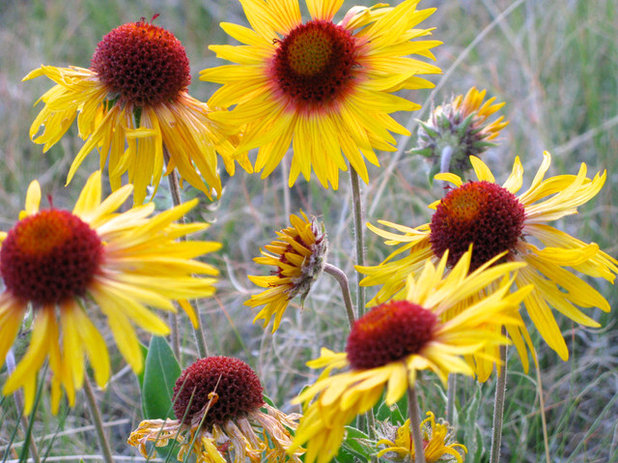
Susan J Tweit
Blanketflower (
Gaillardia aristata)
Native on both sides of the Rocky Mountains, south to eastern Oregon, Utah, Colorado and Kansas; in Canada, native from British Columbia to Saskatchewan
Blanketflower thrives in poor soils, dry conditions and bright sunshine. This long-blooming wildflower puts out a multitude of cheery flower heads from early summer until the frost comes. Blanketflower is a magnet for butterflies and native bees, as well as beetles and other pollinators; bristly hairs covering its foliage make it deer- and rabbit-resistant. Goldfinches and siskins avidly eat the seeds.
Blanketflower grows to 2½ feet tall and wide. Best in full sun, it prefers well-drained unenriched soils and is a star in hot, difficult spots in the garden. It reseeds readily, which makes it a natural for meadow-style or informal gardens. Team it with blue-purple flowers like Rocky Mountain penstemon (
Penstemon strictus) or native asters.
See how to grow blanketflower
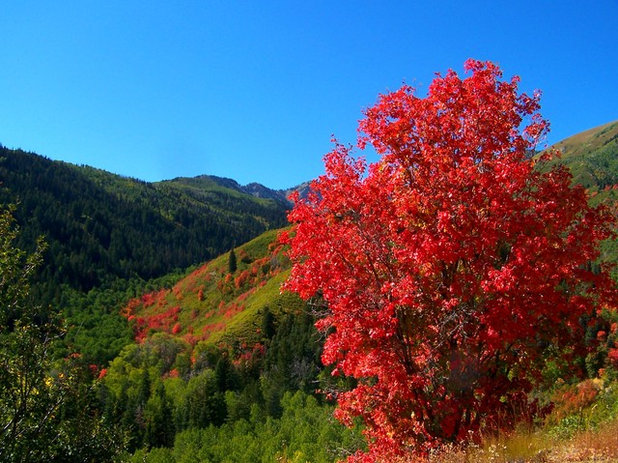
Bryant Olsen
Bigtooth Maple(
Acer grandidentatum)
Native to canyons in mountains and plateaus from northwestern Montana to northern Mexico, including southeastern Idaho, southwestern Wyoming, western Utah, southern Colorado, western Texas and the desert ranges of southwestern New Mexico and southeastern Arizona
Plant bigtooth maple for cool shade, brilliant autumn colors and songbird habitat. The sugar maple of the Rocky Mountains is one of our few native deciduous trees suitable in traditional lawn and garden landscapes. It provides welcome summer shade, rosy seeds and classic maple-shaped leaves and gorgeous fall color, as well as nesting habitat for songbirds.
Bigtooth maple will reach 50 feet tall and 25 feet wide if given supplemental water and enriched soil; it tolerates some drought and will thrive in mildly alkaline soils. It does not thrive in the hot summers of the Wests’s lowest elevations.
See how to grow bigtooth maple
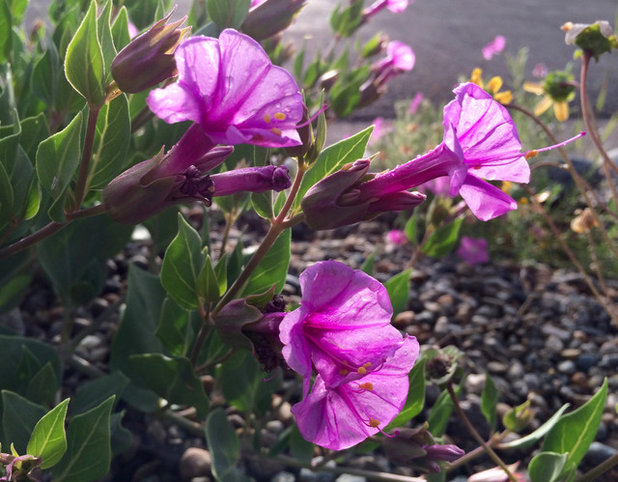
Susan J Tweit
Colorado Four O’Clock(
Mirabilis multiflora)
Native from Colorado and Utah south to northern Mexico
This high-desert native thrives in full sun, provides copious blooms and has a mounding habit and pollinator appeal. Colorado four o’clock’s flowers fill summer afternoons with their magenta color, attracting hovering moths, butterflies and hummingbirds. The plant’s pink-tinged succulent stems and shiny leaves fill hot spots in the garden with color and life.
Colorado four o’clock sprouts late from a taproot that can grow huge, and grows until the fall frosts come. It grows to nearly 3 feet in height, and at least that wide, and prefers well-drained, sandy or even gravelly soil. Plant for summer color as a ground cover in hell strip parkways, or in the middle of a xeric border to camouflage drying leaves of spring-blooming bulbs.
See how to grow Colorado four o’clock
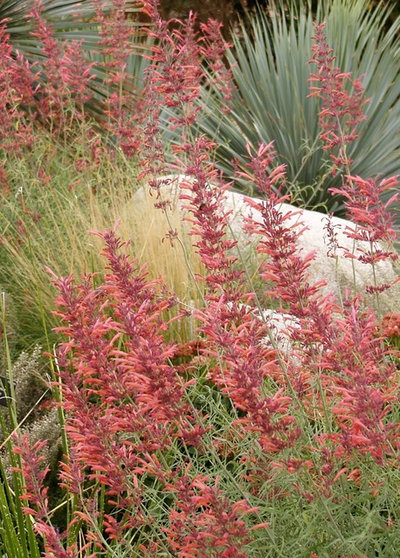
Plant Select®
Threadleaf Giant Hyssop(
Agastache rupestris)
Native to the mountains of the southern Southwest and northern Mexico
Threadleaf giant hyssop adds fragrance to late-summer and fall xeric gardens, with its silvery-green leaves that smell of licorice. It really shines when spikes of lavender to pink buds open, producing sunset-red blooms that attract crowds of hummingbirds to sip their abundant nectar.
Plant threadleaf giant hyssop in sunny locations with well-drained soils; water only until established. It also thrives in containers. Pair with sunshine-yellow coreopsis for a color punch. This member of the mint family grows to at least 2 feet tall and 15 inches wide, and its foliage is deer-resistant.
See how to grow threadleaf giant hyssop
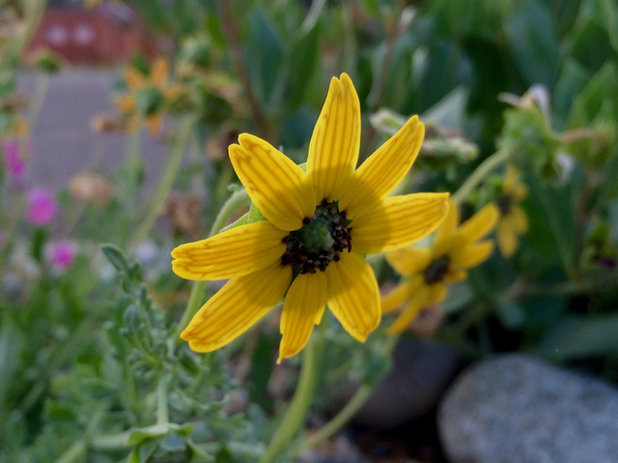
Susan J Tweit
Lyreleaf Greeneyes(
Berlandiera lyrata)
Native to Colorado, Kansas and Oklahoma south to central Mexico, including Texas, New Mexico and Arizona
This heat- and drought-tolerant Southern Plains native has daisy-like yellow flowers with an earthy chocolate scent, blooming from spring to when the first frost hits. Single flowers atop short stalks open in early morning — when their scent is strongest — above green leaves with smooth to wildly undulating edges. The lime-green seedbeds are decorative as well but don’t last long, as songbirds avidly eat the papery seeds.
Lyreleaf greeneyes grows to 12 inches tall by 15 inches wide. Plant it in drifts in sunny and hot locations, including south-facing slopes and terraces.
See how to grow lyreleaf greeneyes
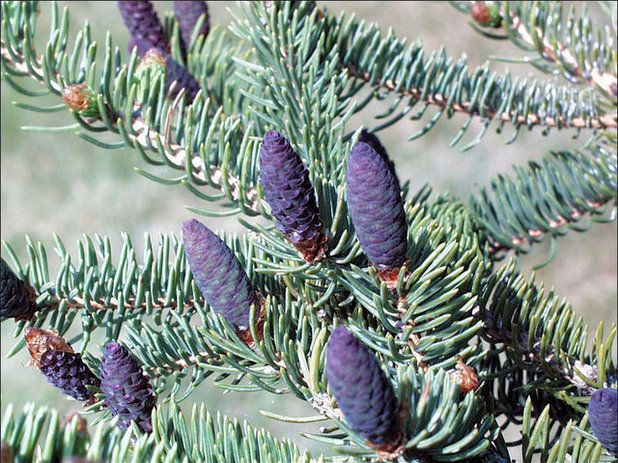
Paul Wray, Iowa State University
White Spruce(
Picea glauca)
Native across North America from the boreal forests of the Yukon to Canada’s Maritime provinces, south to the Rocky Mountains in Wyoming and the Black Hills of South Dakota
White spruce’s sculptural form and evergreen foliage bring a mountain-forest feel to gardens and landscapes. It also provides year-round beauty, and food and shelter for wildlife. With silvery-blue evergreen foliage and a Christmas-tree conical shape, this most heat- and drought-tolerant type of spruce sprouts beautiful purple cones in summer that offer important winter food for pine grosbeaks and crossbills.
Mature trees reach 20 to 80 feet tall with a narrow profile, from 4 to 12 feet wide. Plant white spruce in full sun or partial shade.
See how to grow white spruce
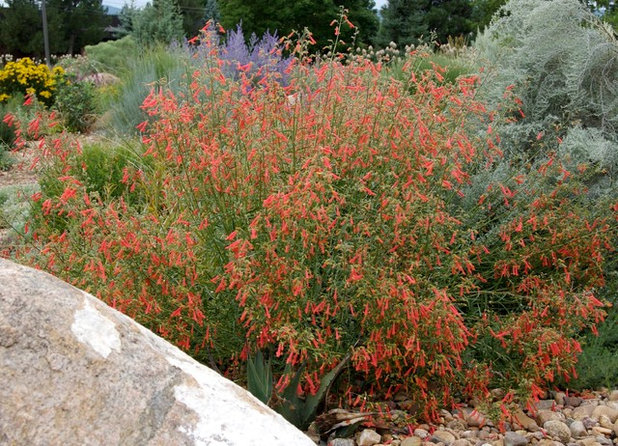
Plant Select®
Bridge Penstemon(
Penstemon rostriflorus)
Native to southwestern Colorado, Utah and Arizona west to southeastern California
Bridge penstemon’s abundant scarlet flower spikes bring a punch of color — and hummingbirds — to gardens from late spring through fall. This longest-lived and longest-blooming type of red penstemon also has bright green foliage and seeds that feed chipmunks and other small wildlife in winter.
Its shrubby form with multiple arching flower stalks — hence its other common name, mountain fountains — fills out garden borders and mixes well with tall native grasses. Bridge penstemon grows up to 32 inches tall and 30 inches wide. It prefers full sun or light shade and needs supplemental irrigation in areas with less than 15 inches of annual precipitation.
See how to grow bridge penstemon

Talus
Soapweed Yucca(
Yucca glauca)
Native to the Great Plains and foothills of the Rocky Mountains from Alberta, Canada, to northern New Mexico, and east as far as Arkansas
Soapweed yucca’s evergreen leaves brighten the winter garden and add sculptural interest year-round. Beloved for its spiky, punk-rocker silhouette and dramatic flower stalks with waxy, fragrant blossoms, this long-lived shrub tolerates cold and drought. Its bell-shaped, downward-hanging flowers are the sole food and nesting habitat for a species of night-flying moth; the nectar and pollen also attract hummingbirds and other pollinators.
A spiky ball of leaves grows to 3 feet tall and wide, and the flower stalk may grow as tall as 6 feet. Soapweed yucca prefers full sun, and it is deer- and rabbit-resistant.
See how to grow soapweed yucca

Susan J Tweit
Skunkbush Sumac(
Rhus trilobata)
Native to the plains, intermountain basins and mountain foothills from Alberta, Canada, to northern Mexico, and from the Pacific Coast states east to the Dakotas, Arkansas and Texas
Plant skunkbush sumac for its brilliant fall color and tiny late-winter flowers that provide food for pollinators. It’s a long-lived and drought-tolerant shrub, with tiny, fragrant flowers that precede fuzzy clusters of tart red fruit that appeal to songbirds and quail. The shrub’s charmingly naturalistic form can be pruned into a more formal shape as well.
Skunkbush sumac can reach 8 feet wide and 5 feet tall. Since it thrives in poor soil, it is ideal for providing shade on steep, hot banks and other difficult areas.
See how to grow skunkbush sumac
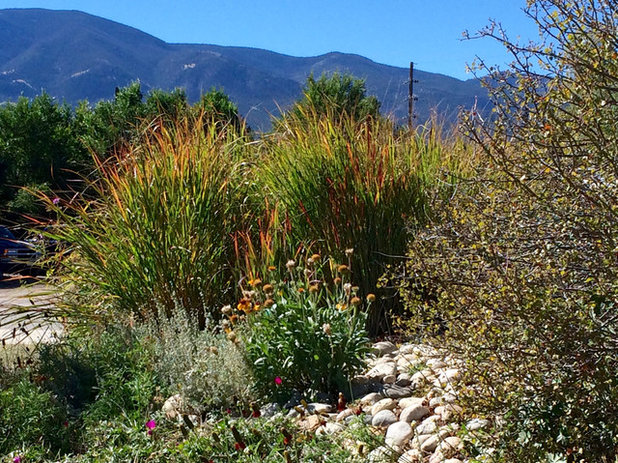
Susan J Tweit
Switchgrass(
Panicum virgatum)
Native to a wide swath of North America, from Saskatchewan to Quebec in Canada and south to Florida, Mexico and Central America; most abundant on the Great Plains
Switchgrass is a beautiful and long-lived ornamental bunchgrass for full sun.
It is one of the most cold-hardy and drought-tolerant large native prairie grasses. Switchgrass is a warm-season grass, producing blue-green blades in late spring and summer, followed by airy seed heads. In fall, the upper parts of the leaf blades turn gold to orange at the tips and retain a warm hue over the winter, giving interest to winter landscapes. Switchgrass provides hiding cover for butterflies and other pollinators; its seeds feed goldfinches, chickadees and other small songbirds in winter.
Switchgrass bunches grow 4 to 5 feet tall and reach 2 feet wide, and easily live a decade or more. They may need supplemental watering in dry areas. Plant in spring through fall.





